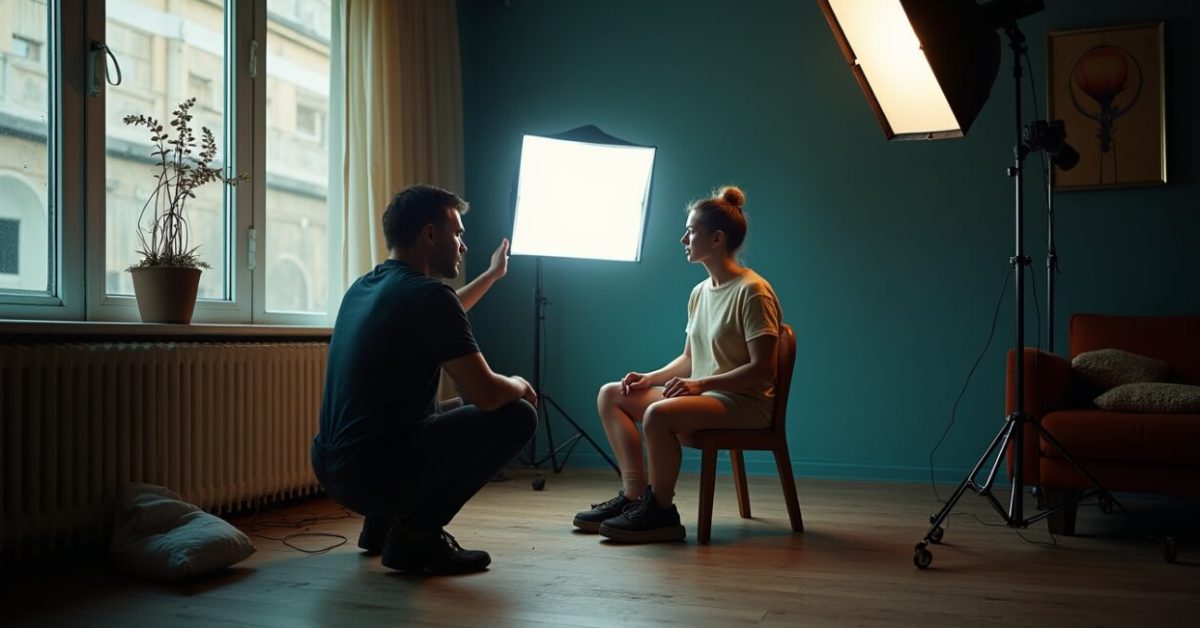You’ve scrolled past glossy portraits and thought, why do some faces feel cinematic while others feel flat, doesn’t it bother you when your shots lack mood
I’m going to show subtle tricks with softbox lighting that pros never post as secrets, including grid placement, offset ratios, and brand-specific tweaks for Profoto and Godox, so you can recreate magazine looks without breaking the bank.
Softbox Lighting Secrets That Change a Portrait
Think about this, one small move with your softbox lighting can turn a friendly headshot into something brooding and editorial. Here’s the promise, you’ll learn the exact offsets, when to add a grid, and which modifiers to trust.
Why Grid Placement Matters More Than Power
- Place the grid tight for moody falloff
- Use a shallow angle to sculpt cheekbones
- Combine with a weak rim to separate subject
Grids control spill and shape shadows, so you get contrast without harshness. Try a 40° grid at two-thirds power and step closer, you’ll see the background drop into pleasant darkness while the face stays textural.

Offset Ratios That Create Cinematic Depth
- Key at 1.4m left, fill at -1 stop
- Hair light at +2 stops for separation
- Background at -3 stops to keep mood
Here’s the secret, use a 3:1 key-to-fill ratio for dramatic portraits, and nudge the softbox 20 degrees off axis to keep catchlights interesting. Small changes in distance change falloff fast, so meter or use a gray card to replicate looks.
Brand-specific Mods, Profoto Vs Godox
Profoto modifiers give clean specular highlights, Godox can be punchy on a budget, so choose based on taste not prestige. But don’t stop there, tweak mounts and inner baffles and you get surprisingly different character from the same softbox.
| Feature | Profoto | Godox |
|---|---|---|
| Build | Premium, rigid | Lightweight, affordable |
| Output consistency | Very stable | Good with variance |
| Best use | Studio editorial | On-location editorials |
In practice, mix and match, use Profoto for controlled studio sheen and Godox when you need portability. Both can deliver cinematic portraits when you control grid, distance, and power ratio.

Budget Tests to Copy Magazine Looks
- Softbox + towel diffusion for cheap softening
- Cardboard flags as inexpensive barn doors
- Use reflectors to mimic fill instead of another strobe
Try three quick tests, one for contrast, one for texture, one for mood. Use your phone to snapshot setup distances, write down ratios, and you’ll recreate the exact look later. Small notes are the secret to repeatability.
Erros Comuns
- Placing softbox too far, losing softness
- Overtrusting on-camera TTL in moody setups
- Ignoring hair separation, blending subject into bg
These mistakes kill mood. Move closer for softer falloff, switch to manual for predictable ratios, and always add a hair or rim light to separate subject. Fixing one of these often makes the portrait feel magazine-ready instantly.
Quick Checklist to Shoot Tonight
- Set key at 3:1 or 4:1 ratio
- Add a 40° grid for controlled falloff
- Use Profoto/Godox tweaks according to budget
Now go test, use simple notes and small changes. Want more theory, check a reliable source like The New York Times for industry features, or technical lighting basics at Britannica to ground your decisions.
Ready to make moody portraits that feel editorial, not Instagram-filtered? Apply one grid trick tonight and compare before-after shots.
Share your test, I want to see which Profoto or Godox setup surprised you most, and if it worked on a budget.
What is the Best Softbox Size for Moody Portraits?
The ideal size depends on subject distance and desired softness, generally a 60x90cm (24×36″) rectangular softbox balances wrap and control for head-and-shoulders. Move it closer for softer light or add a grid for focused contrast. For smaller budgets, a 50cm octabox with diffusion works well, test distances to match magazine shadow depth.
How Do I Set Offset Ratios to Sculpt a Face?
Start with a 3:1 key-to-fill ratio to give shape without harshness. Position key 20–30 degrees off axis and raise slightly above eye line for classic modeling. Use a gray card or handheld meter to confirm stops. Small 0.5 stop tweaks change character a lot, so bracket a few frames to pick the best feel.
Which Grid Angle Should I Use for Dramatic Falloff?
Grids are rated by degree, 40° is versatile for portraits, offering focused light with smooth edges. For tighter control and darker backgrounds try 20°, it creates a cinematic spotlight effect. Combine with proximity adjustments, closer grids increase contrast and sculpting, while farther gives a gentler wrap.
Can Godox Match Profoto Looks on a Budget?
Yes, with careful modifier choices and consistent manual settings Godox can emulate many Profoto characteristics. Use good softboxes, add baffles, and control spill with grids or flags. The main difference is build and consistency, but the visual end result can be convincingly editorial with disciplined technique.
Simple Test to Replicate a Magazine Cover at Home?
Set key at 3:1, use a 40° grid on a softbox, add a +1 stop hair light, and place background -3 stops from subject. Shoot at eye level with shallow depth (f/2.8–f/4). Take a note of distances and power, tweak slightly, and compare against target images to refine. Repeat until tonal balance matches.



